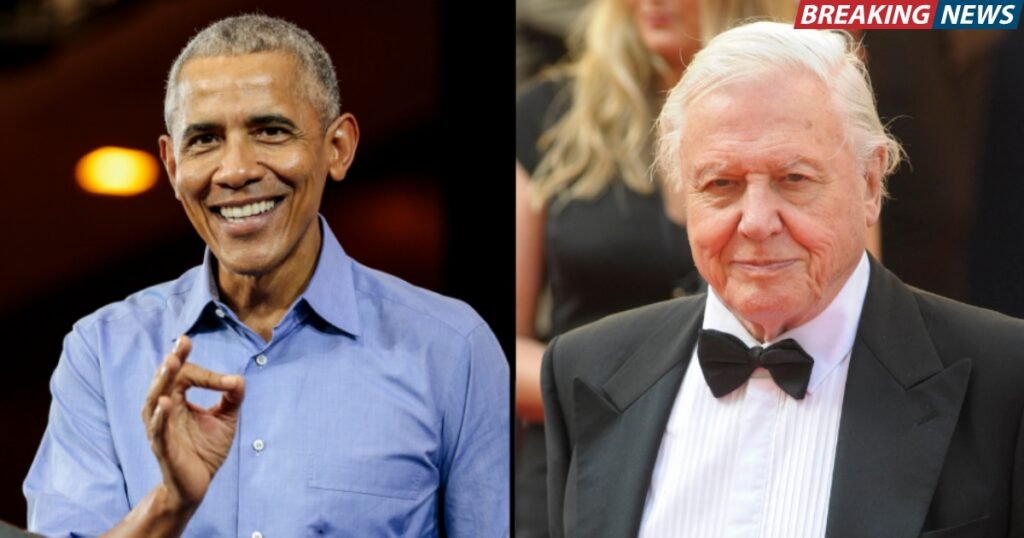
Barack Obama and Steve Bannon rarely agree on anything – but when it comes to AI, both are sounding the alarm. Despite their stark political differences, they share deep concerns about AI’s growing influence on American jobs, economic stability, and political integrity. As automation and algorithms reshape society, their unlikely alignment signals a crisis too big to ignore.
A Rare Alliance: What Brings Obama and Bannon on the Same Page
Barack Obama is the 44th President of the United States and a champion of globalism and progressive policy. Next, Steve Bannon is the former White House chief strategist known for his nationalist-populist ideology, rarely aligned on major issues.
However, artificial intelligence (AI) has emerged as a rare exception. Despite their opposing worldview, both figures are now voicing urgent concerns about AI’s impact on jobs, economic stability, and democratic
process.
1. Job Displacement & Economic Anxiety
Both Obama and Bannon expressed concerns that AI and automation are hollowing out the American middle class:
- Obama’s View: In speeches and interviews, Obama has warned about “technological disruption” disproportionately affecting blue-collar and even white-collar jobs. He emphasizes the need for retraining programs, education reform, and strong labour protections to cushion the blow of automation.
- Bannon’s Take: While coming from a different angle, Bannon shares the fear that AI-driven automation will devastate working-class communities, mainly in America’s heartland. He framed it as a betrayal by globalist elites and a driver of populist unrest. Furthermore, he believes that this issue helped fuel Donald Trump’s 2016 victory.
2. Political Manipulation & Deepfakes
Another area of mutual concern is the use of AI in political propaganda:
- Obama’s Warning: A staunch defender of democratic institutions, Obama has repeatedly warned about the rise of AI-generated misinformation, particularly deepfakes. He believes that it could erode public trust and disrupt elections.
- Bannon’s Alarm: Bannon, who is no stranger to the power of media influence, has voiced worry that AI tools could be weaponized by bad actors. It includes both foreign and domestic actors to manipulate votes and fracture American society further.
3. A Broken System Ill-Prepared for AI
Both men agree that the current political and regulatory system is poorly equipped to handle the AI revolution:
- Obama believes that Silicon Valley’s rapid development of AI technologies has far outpaced Washington’s ability to regulate or understand them. Further, he calls for a more proactive, ethical, and inclusive approach to AI governance.
- Bannon, while sceptical of centralized government, argued for breaking up Big Tech and implementing safeguards against corporate overreach and AI monopolies. He sees unchecked AI development as another example of elite institutions abandoning ordinary Americans.
Automation Anxiety: How AI is Reshaping the American Workforce
The rise of AI is transforming the American labour market at a pace few anticipated. From logistics and manufacturing to law and medicine, AI-driven tools are capable of performing tasks that once required human labour. However, some see this as an opportunity for innovation and economic growth; others, like Obama and Bannon, warn it may hollow out the workforce and deepen inequality.
1. A New Era of Job Displacement
Historically, automation impacted mostly manual labour, such as factory assembly lines or cashiers. However, AI has expanded the reach of automation into areas once thought immune. These areas include legal research, financial advising, customer service, software development, and even art and writing.
- White-Collar Threat: AI tools like ChatGPT and Codex can now handle tasks in law, accounting, and programming. Thus, the jobs that require advanced education are now vulnerable to being replaced or streamlined.
- Blue-Collar Evolution: In transportation and warehousing, AI-powered robotics and autonomous vehicles are decreasing the need for human drivers and labourers. Therefore, Amazon warehouses already deploy thousands of AI-managed robots.
2. The “Barbell Economy” Problem
One of the central fears is the formation of a “barbell economy”. It is an economy with high-paying technical jobs at one end and low-wage, low-skill jobs at the other, with little in the middle. Thus, this loss of middle-class stability threatens the traditional American dream and accelerates economic inequality.
- Obama’s Concern: Obama has emphasized restraining and education reform as essential responses. He cites the need for lifelong learning programs and investment in community colleges to help workers transition.
- Bannon’s Framing: Bannon argues that automation reinforces globalist exploitation. He frames it as a betrayal of American workers by elites who profit from efficiency at the expense of national labour.
3. Regional Impact and Social Fragmentation
AI’s impact is not evenly distributed. Rust Belt towns, agricultural regions, and working-class suburbs are more valuable to automation than major cities and tech hubs. Thus, this uneven transformation is fueling regional despair and political polarization.
- Job Deserts: Areas once dependent on manufacturing are becoming “job deserts,” where entire communities lose their economic base with few alternatives.
- Urban-Rural Divide: AI adoption tends to benefit cities with tech infrastructure while accelerating the decline in rural areas. Thus worsening existing geographic inequality.
AI’s Growing Influence on the Democratic Process
AI is not just transforming industries; it’s rapidly infiltrating the core mechanics of democracy itself. From election interference and disinformation to automated lobbying and voter profiling, AI is becoming a political disruptor with unprecedented power.
1. Hyper-Personalized Propaganda
AI enables microtargeting, where political campaigns or interest groups use machine learning to analyze voter data and craft personalized messages tailored to individual fears, biases, or preferences.
- Behavioural Profiling: AI can predict and influence behaviour by analyzing browsing habits, social media interactions, and consumer data–often without users’ knowledge.
- Ethical Dilemma: While effective for campaign strategy, this raises ethical concerns about manipulation, consent, and fairness in the democratic process.
2. Foreign Influence and Cyber Warfare
Hostile states have used AI-powered bots and content farms to influence elections and sow division.
- Russia and China: U.S. intelligence agencies have warned that adversaries use AI tools to amplify divisive narratives and destabilize American political unity.
- Cyber Infiltration: AI can also assist in hacking, phishing, and manipulating public databases. Thus posing direct threats to election infrastructure.
3. Automated Lobbying and Policy Manipulation
AI is changing how policy is influenced, with algorithms now capable of generating policy proposals, tracking legislation, and auto-generating public comments at scale.
- Lobbying at Scale: AI can produce and submit thousands of tailored comments to sway public rule-making processes, such as FCC or EPA hearings.
- Regulatory Loopholes: Current laws haven’t caught up with this technology, allowing corporations and interest groups to wield AI for disproportionate influence without meaningful oversight.
From the Oval Office to Breitbart: Shared Fears of a Technological Tipping Point
In today’s polarized political climate, it’s rare to find consensus between a former U.S. president and a far-right media strategist. Yet, both Barack Obama and Steve Bannon have voiced serious concerns about the accelerating influence of AI and its implications.
1. The Rise of AI-Driven Surveillance and Control
Obama and Bannon share concerns over how AI empowers governments and corporations to exert unprecedented surveillance and influence over individuals.
- Obama’s caution: He warns of AI’s potential to infringe on privacy, civil liberties, and democratic norms, especially when left unregulated.
- Bannon’s Critique: Bannon sees tech monopolies and global institutions using AI to engineer compliance, silent dissent, and centralized control. Thus, echoing dystopian fears of digital authoritarianism.
2. The Tipping Point: A Future Without Consensus
What worries both Obama and Bannon is the trajectory: a society where automation breeds joblessness, AI accelerates inequality, and public discourse becomes unmoored from reality. In such a scenario, they foresee:
- Radical political shifts
- Mass discontent and protests
- An overwhelmed or complicit governing class
Conclusion
As AI accelerates social, economic, and political disruption, even ideological oppositions like Obama and Bannon are united in concern. Their warnings highlight a critical truth, which is that the future of American democracy and stability hinges on how to manage AI’s rapid rise before the tipping point becomes irreversible.


